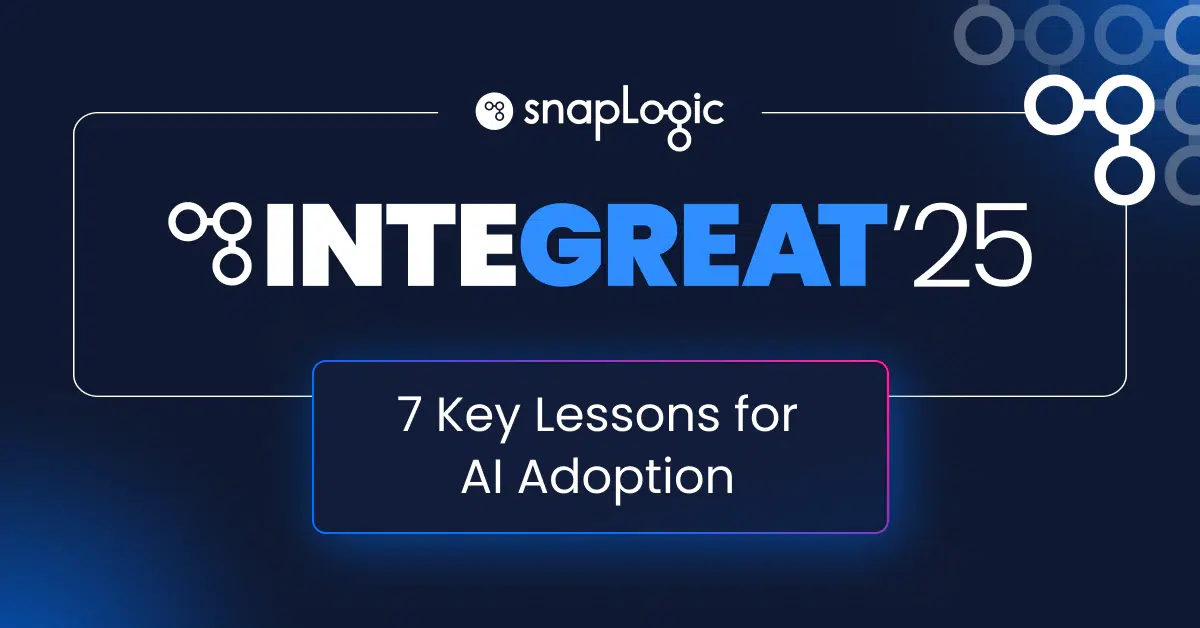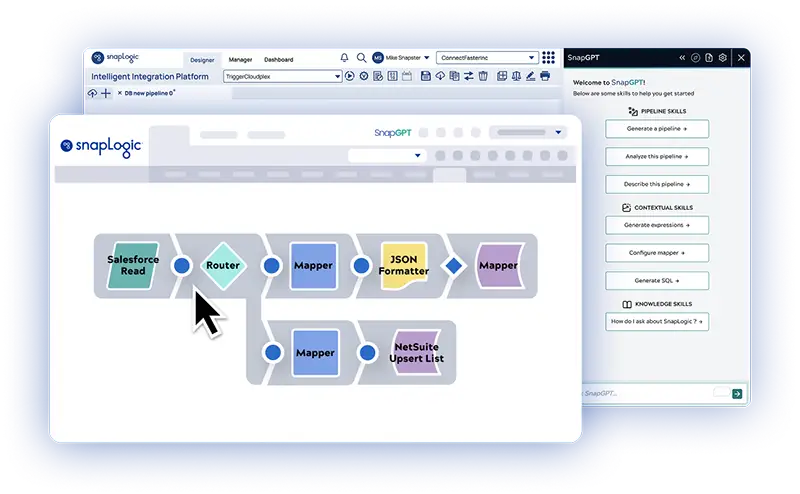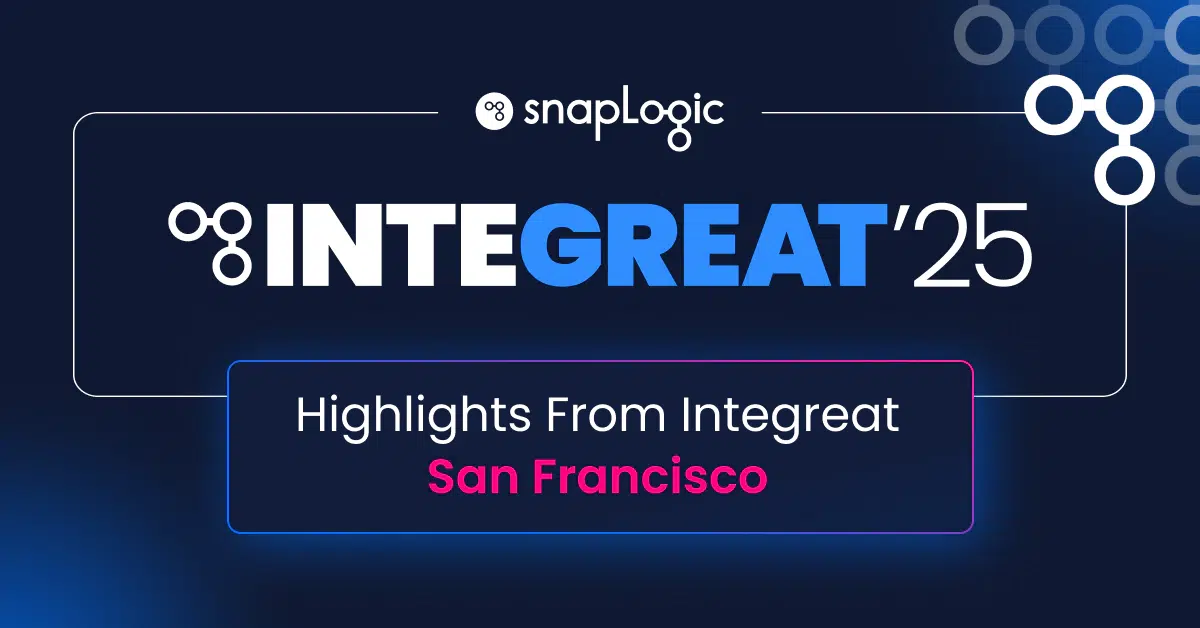At SnapLogic, we just wrapped up our fall event schedule, taking the Integreat 2025 tour from San Francisco to New York City, Chicago, and London. We spoke with hundreds of customers, partners and experts from across industries around the world. And let me tell you, the world of integration is so hot right now!
Spending time in the field gives us a chance to share the latest from our platform and our leadership, but it also helps us gain perspective on what’s driving technology leaders and practitioners, and what they should know. I’ve distilled it down to the 7 most common but critical challenges to face when approaching AI in the enterprise.
1. The Agentic AI revolution is here, but integration is a key bottleneck
AI adoption is accelerating dramatically. According to recent research of AI in the workplace, 78% of employees already use AI (62% of which use it daily), and 50% of workers surveyed use AI agents.
However, this AI revolution hinges on integration. The future success of a company to leverage AI is heavily dependent on a data-driven and composable system architecture.
2. AI project failure is high, and data is the #1 barrier
Industry analysts indicate that a significant portion of AI projects fail to be deployed or will be abandoned altogether. The single largest barrier to successful deployment is data availability and AI-readiness. In fact, Gartner predicts that by the end of next year, companies will likely abandon 60% of AI projects unsupported by AI-ready data.
Additional factors that get in the way of AI deployment include:
- Skills shortage and highly technical tools
- Outdated middleware
- Data governance and security
3. Mega-platforms create “walled gardens” and a “context gap”
Major platforms (you know the ones) provide AI features, but only for data within that specific platform; aka, a “walled garden.” However, for as lovely as that may sound, this isolation creates a “context gap,” where AI models are “powerful brains” but lack knowledge of the overall business, customers, and products.
4. MCP could be the solution to (finally) seeing Customer360
The Model Context Protocol (MCP) can be the mechanism for “bringing sanity to the agentic world.” MCP acts as a universal adapter, allowing any AI model or agent to plug directly and securely into a company’s private data sources.
Our team demonstrated how SnapLogic specifically can function as both an MCP Client (to integrate with the ecosystem of over 16,000 public MCP servers) and an MCP Server (to extend the reach of internal agents).
5. Legacy middleware modernization is essential and can be accelerated
Outdated on-prem middleware is the #3 barrier to AI project success. The SnapLogic Intelligent Modernizer tool (SLIM) offers AI-led migration to modernize legacy workloads from tools like Informatica, DataStage, and Mulesoft. This process is claimed to reduce modernization time and cost by up to 80%.
6. Governance, security, and compliance are critical concerns
Ungoverned AI adoption is creating new security and data privacy gaps. Make sure your vendors have recognized and are committed to governance and security through relevant regulatory and compliance certifications. These may include SOC 2 Type II, ISO 27001, HIPAA, CCPA and GDPR, and so on.
7. Strategic guidance and upskilling are needed beyond tools
Success requires more than just tools; it requires the expertise and guidance to succeed in the agentic world. The presentation from Boehringer Ingelheim also emphasized that a successful, data-driven Target Operating Model requires a robust technical platform and organizational enablement, including employee upskilling, highlighting that technology alone cannot improve poor processes.
Let SnapLogic be your guide to Agentic AI
The age of Agentic AI is here, but our conversations in the field confirm that its promise is tethered to overcoming a fundamental challenge: integration bottlenecks. And these bottlenecks are caused by a whole host of data issues spanning from access to security to technical debt and the list goes on.
But we’ve got good news. SnapLogic set out on the road with Integreat 2025 to show how those data and connection challenges can be solved and innovation can begin, through one foundational platform.
I should reiterate that we know that technology alone doesn’t fix a bad process or solve all the problems automatically. It’s got to be the combination of the right platform, the right strategy, and the right expertise that will allow your organization to truly succeed in this new, intelligent world. We hope to be part of all three.











